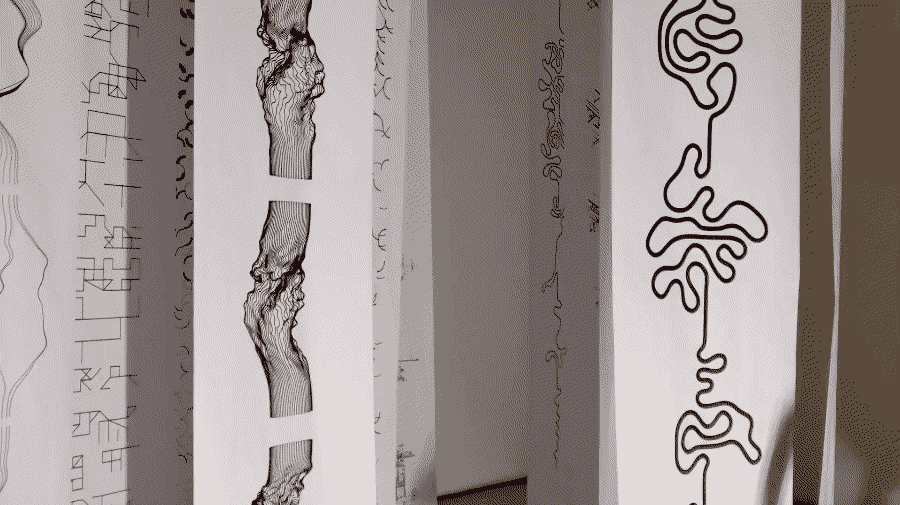
Location: Artus Contemporary Art Studio (Budapest, H)
Format: Algorithmic Drawings, Procedural Sounds, Installation
Year: 2019
Description
Several hanging paper stripes are forming a forest all together in the space. Some stones are fixing their position on the ground. The lines above the stones resemble different algorithmic taxonomies for each stripe. These lines are visible from both side of the papers, so the drawings are transformed into a spatial installation where the audience is welcome to walk around. There is also a sonic component of the installation: an acoustic layer can be heard now and then while spending your time with the installation. These sounds are combinations of digital synthesis, percussive elements and pitch shifted insect noises.
Random forests
Random forests are a collection of algorithms that are used when training machines to learn different classification tasks. As their name implies, forests consists of a large number of individual decision trees that operate as an ensemble. The fundamental concept behind random forest is a simple but powerful one — the wisdom of crowds. In data science speak, the reason that the random forest model works so well is: A large number of relatively uncorrelated models (trees) operating as a committee will outperform any of the individual constituent models. The reason for this wonderful effect is that the trees protect each other from their individual errors.
This concept is applied in the structure of the installation: the different drawings are complementing each other, they are not valid pieces in their own if we take any of them out of the forest. They act together, with different algorithmic drawing methods on each stripe.






